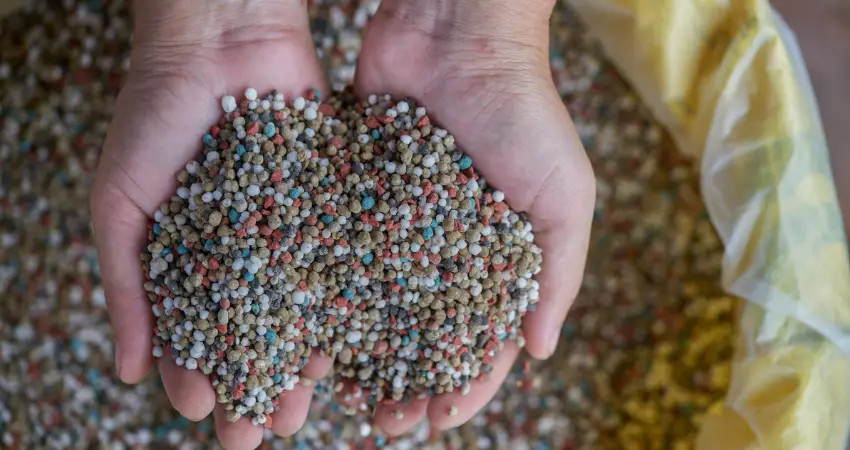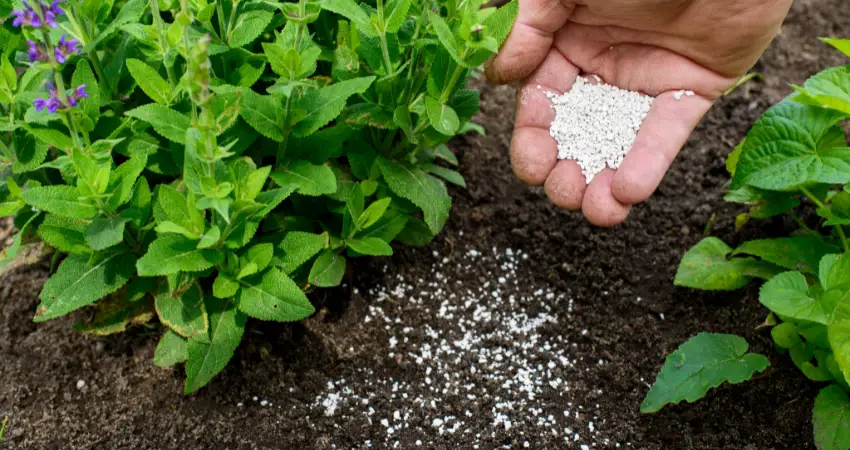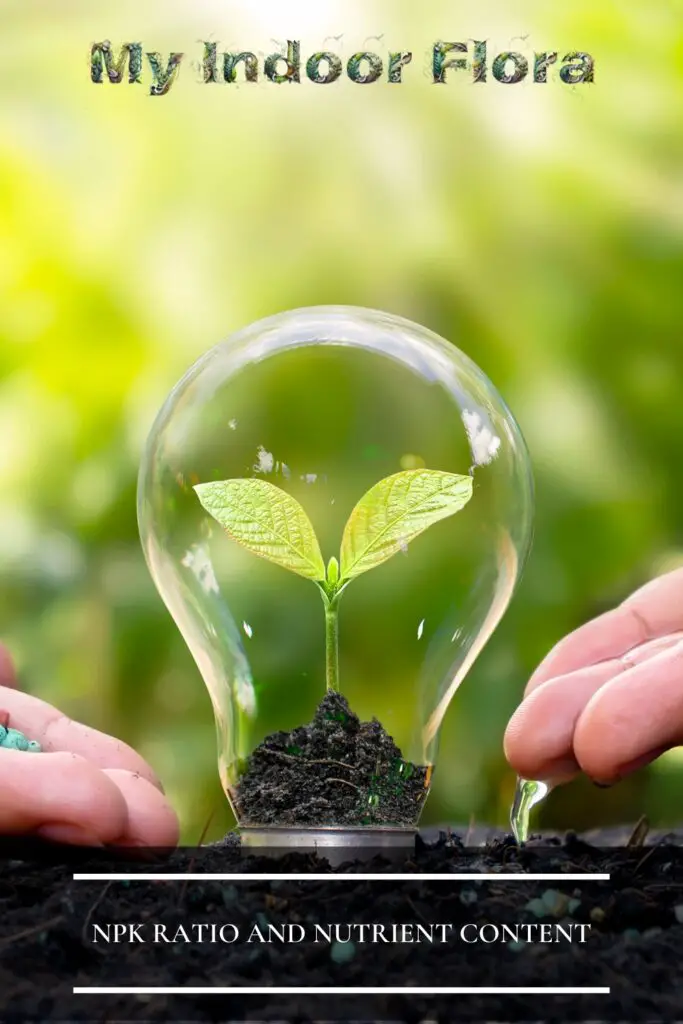In the world of agriculture and gardening, the proper use of fertilizers plays a pivotal role in promoting healthy plant growth and maximizing crop yields. However, with countless fertilizer products available on the market, it can be challenging to determine which one is the most suitable for your plants. A crucial aspect of making informed decisions lies in understanding fertilizer labels, particularly the NPK ratio and nutrient content.
This comprehensive guide aims to help you decode fertilizer labels and make the best choices for your indoor/outdoor garden or farm. By the end of this article, you will gain a deeper understanding of fertilizer terminology, components, and their environmental and safety implications. Armed with this knowledge, you can confidently select and apply fertilizers that cater to the specific needs of your plants while minimizing any adverse effects on the environment.
Fertilizer Terminology and Components

Fertilizers consist of essential macro and micronutrients that plants require for optimal growth. Here’s a quick breakdown of these nutrients:
Macro and Micronutrients
- Macronutrients: Nitrogen (N), Phosphorus (P), and Potassium (K) are the primary macronutrients needed in relatively large amounts by plants. Nitrogen promotes leafy growth and overall plant vigor, phosphorus supports root development and flowering, while potassium is crucial for fruiting and general plant health.
- Micronutrients: Iron (Fe), Manganese (Mn), Zinc (Zn), Copper (Cu), Boron (B), Molybdenum (Mo), and Chlorine (Cl) are required in smaller quantities. Nevertheless, these micronutrients are essential for various plant processes, such as photosynthesis and enzyme activity.
Organic vs. Inorganic Fertilizers
Fertilizers are broadly classified into two categories – Organic and Inorganic Fertilizers.
- Organic fertilizers are derived from plant and animal sources, such as compost, manure, and bone meal. They release nutrients gradually and improve soil structure, but may not provide all nutrients in the required amounts.
- Inorganic fertilizers, also known as chemical or synthetic fertilizers, are manufactured using minerals and chemical processes. These fertilizers provide nutrients in specific ratios, are fast-acting, but may cause environmental issues if not used responsibly.
Granular, Liquid, and Slow-release Fertilizers
- Granular fertilizers are dry, solid particles that can be easily spread on soil surfaces. They can be slow-release or fast-acting, depending on their formulation.
- Liquid fertilizers are dissolved in water and applied to the soil or foliage. They provide nutrients quickly but may need more frequent applications.
- Slow-release fertilizers are formulated to release nutrients over time, reducing the need for multiple applications and minimizing the risk of over-fertilization.
NPK Ratio

The NPK ratio is a crucial aspect of fertilizer labels, indicating the proportion of nitrogen (N), phosphorus (P), and potassium (K) present in the product.
Here’s a more in-depth look at each element and its role in plant growth:
- Nitrogen (N): Nitrogen is crucial for plant growth as it is a major component of chlorophyll, which is responsible for photosynthesis. It also plays a key role in the formation of amino acids, which are the building blocks of proteins. Adequate nitrogen levels promote healthy foliage and overall plant growth.
- Phosphorus (P): Phosphorus is essential for the development of strong root systems, as well as for the formation of flowers, fruits, and seeds. It also plays a vital role in the process of photosynthesis, cell division, and the transfer of energy within the plant.
- Potassium (K): Potassium is necessary for various plant processes, including the regulation of water and nutrient uptake, enzyme activation, and overall plant health. It also helps to strengthen cell walls, improve resistance to disease and pests, and enhances the quality of fruits and flowers.
The NPK ratio communicates the percentage of each macronutrient in the fertilizer. For instance, a 10-20-10 NPK ratio signifies 10% nitrogen, 20% phosphorus, and 10% potassium.
NPK Ratio Examples
- Balanced fertilizers contain equal proportions of N, P, and K (e.g., 10-10-10), suitable for general plant maintenance.
- High-nitrogen fertilizers have a higher N proportion (e.g., 24-4-8) and are ideal for promoting leafy growth in lawns and leafy vegetables.
- High-phosphorus fertilizers (e.g., 5-10-5) support root development and flowering in plants like bulbs and fruit trees.
- High-potassium fertilizers (e.g., 0-0-60) are perfect for improving fruiting and disease resistance in tomatoes, peppers, and potatoes.
Determining the Appropriate NPK Ratio
To select the right NPK ratio for your plants, consider the following:
- Soil testing: Analyze your soil’s nutrient levels and pH to determine which nutrients are deficient and need supplementation.
- Plant nutrient requirements: Research your plants’ specific nutrient needs and growth stages to tailor the fertilization process accordingly.
Nutrient Content and Labeling

Understanding the nutrient content of a fertilizer is essential for proper application and achieving desired results. Here’s a breakdown of the labeling components:
Nutrient Content Calculation
- Percentage by weight: The label lists the percentages of N, P, and K by weight. For example, a 50-pound bag of 10-10-10 fertilizer contains 5 pounds of each nutrient (10% of 50 pounds).
- Weight-to-weight conversion: To calculate the actual amount of each nutrient, multiply the percentage by the fertilizer’s weight.
Label Components
- Nutrient guarantees: The label guarantees the minimum percentage of each macronutrient present in the fertilizer.
- Fertilizer grade: This term refers to the NPK ratio, which is prominently displayed on the label.
- Derived from statement: This section lists the specific sources of the nutrients found in the fertilizer.
- Additional product information: Labels may include instructions for proper application rates, methods, and safety precautions.
Understanding Label Symbols and Abbreviations
Familiarize yourself with common symbols and abbreviations on fertilizer labels, such as N for Nitrogen, P for Phosphorus, and K for Potassium. This knowledge will help you quickly decipher label information.
Selecting the Right Fertilizer

To choose the appropriate fertilizer for your plants, consider the following factors:
Factors to Consider
- Soil type and fertility: Different soil types have varying nutrient levels and water-holding capacities, affecting fertilizer needs.
- Crop or plant type: Each plant species has unique nutrient requirements, growth stages, and preferred NPK ratios.
- Growth stage and season: Fertilizer needs change throughout the plant’s life cycle and can vary with seasonal fluctuations.
- Local environmental factors: Consider local climate, rainfall patterns, and potential nutrient runoff concerns.
Proper Application Rates and Methods
- Soil amendments: Apply fertilizers as soil amendments to enhance nutrient availability and improve soil structure.
- Broadcasting: Spread granular fertilizers evenly over the soil surface, either by hand or using a spreader.
- Side-dressing: Apply additional nutrients to the soil near the plant’s base during the growing season to provide an extra nutrient boost.
- Foliar feeding: Spray liquid fertilizers directly onto plant leaves for quick nutrient absorption.
Environmental and Safety Considerations
Using fertilizers responsibly can prevent over-fertilization, nutrient runoff, and potential environmental issues.
Over-fertilization and Nutrient Runoff
- Impact on water quality: Excess nutrients, especially nitrogen and phosphorus, can leach into groundwater or run off into surface waters, degrading water quality.
- Algal blooms and eutrophication: Nutrient pollution can trigger algal blooms and eutrophication, depleting oxygen levels and threatening aquatic life.
Safe Handling and Storage
- Protective equipment: Wear gloves, goggles, and a dust mask when handling fertilizers to prevent skin, eye, and respiratory irritation.
- Proper storage conditions: Store fertilizers in a cool, dry place away from direct sunlight, moisture, and open flames.
Organic and Eco-friendly Alternatives
- Compost: Use compost to enrich the soil, improve its structure, and provide a slow-release source of nutrients.
- Green manures and cover crops: Plant legumes, grasses, or other cover crops to fix nitrogen, suppress weeds, and reduce soil erosion. After their growth cycle, incorporate them into the soil as green manure, releasing nutrients and improving soil structure.
- Organic fertilizers: Choose organic fertilizers, such as bone meal, fish emulsion, or seaweed extracts, which provide a more sustainable and environmentally friendly option for supplying essential nutrients.
Bottom Line
Understanding fertilizer labels, NPK ratios, and nutrient content is vital for selecting the right fertilizers and applying them effectively. By determining the appropriate NPK ratio and nutrient content for your plants, you can ensure optimal plant growth while minimizing the environmental impact of your fertilization practices. Always handle and store fertilizers safely, and consider organic and eco-friendly alternatives whenever possible to promote sustainable gardening and agriculture.

